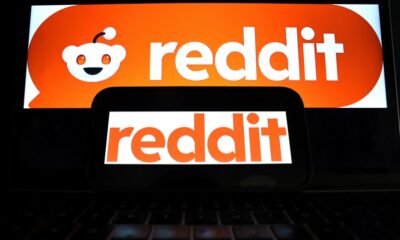SOCIAL
‘Gangnam Style’ impact endures a decade after it broke the internet
When South Korean rapper Psy released ‘Gangnam Style’ a decade ago, few anticipated the scale and speed of its success – Copyright AFP/File DANIEL ROLAND
Qasim Nauman
When South Korean rapper Psy released “Gangnam Style” a decade ago, few anticipated the scale and speed of its success, and how it would help usher in the streaming revolution.
Its madcap music video with the now-trademark horse-riding dance was released on July 15, 2012. It focused on the local, poking fun at Seoul’s wealthy Gangnam district — but within weeks it went global.
By December that year, it had reached one billion views on YouTube. It birthed countless memes and parodies, with the giddy-up dance performed by flash mobs from Azerbaijan to New Zealand.
And “Gangnam Style” showed the music industry what could be achieved through internet platforms and social media, especially by artists outside the West who did not perform in English.
Psy “broke the rules of the game. The traditional marketing and promotional playbooks were essentially thrown out the window,” said Bernie Cho, president of the Seoul-based DFSB Kollective artist and label services agency and an expert on the South Korean music industry.
It showed “the importance, the impact, the influence of YouTube on pop music and pop culture worldwide”.
In 2012, the streaming industry was still in its infancy, providing less than seven percent of global music revenues, according to industry group IFPI.
But the stunning success of “Gangnam Style” — as well as viral videos from performers such as Justin Bieber and Carly Rae Jepsen — showed a new way for acts from anywhere in the world to not only release music but also tap into online ad revenue, find sponsors and get booked for concerts, analysts say.
– ‘Imagine the possibilities’ –
A decade later, streaming is the main source of revenue in the global music industry — 65 percent in 2021, IFPI reported — with content available online via subscription-based services, YouTube, and short-form video apps such as TikTok.
“Gangnam Style” is “an example of the power that a platform like YouTube could have to create interest in a particular video from a lot of different places in the world,” said Michelle Cho, an assistant professor at the University of Toronto who studies Korean pop culture.
“The significance of the video… goes far beyond the content of the video. And it really has more to do with the way that it enabled people to imagine the possibilities of the platform.”
Within months of its release, “Gangnam Style” was the most-viewed video on YouTube. It held that spot for more than three years.
As of July 12 this year, it had close to 4.5 billion views.
Such was the online buzz for “Gangnam Style” and viral phenomena such as “Harlem Shake” that Billboard in 2013 changed how it compiles charts, adding streams on YouTube and other platforms to then-mainstream metrics such as radio and sales.
“My one good job, helping K-pop, was changing the rules of Billboard,” Psy told AFP during an interview in May, pointing to the popularity of Korean acts on YouTube.
– ‘Authentic, original, unique’ –
“Gangnam Style” shook South Korea too, becoming the country’s biggest cultural export and a source of national pride overnight.
K-pop acts had tried to break into international markets before 2012 with some regional success in Asia, but they had failed to make a mark in huge and lucrative Western markets such as the United States.
And then came Psy, who did not fit the profile of polished K-pop idols.
“Industry executives, government officials, pundits, critics, fans… just assumed that the breakout star from Korea would likely be either a boy band or a girl band,” said DFSB’s Bernie Cho.
Psy “proved to everybody that instead of a Korean version of a Western pop star or an international pop star, what the world wanted was something very authentic, original, unique.”
The horse-riding dance was everywhere — performed on prime-time TV in the United States, in an English football stadium, and by Bollywood stars in India.
Then-US President Barack Obama said his daughters had taught him “a pretty good Gangnam Style”.
South Korea is a global entertainment powerhouse today, but in 2012, “Gangnam Style” was the first encounter with Korean pop culture for many audiences.
“It was really influential in perhaps making Korea or Korean music or Korean media more of a common element of general knowledge in lots of places… certainly in the US, but also globally,” said scholar Michelle Cho.
“That knowledge, that… familiarity definitely helps other content gain a foothold.”
SOCIAL
Snapchat Explores New Messaging Retention Feature: A Game-Changer or Risky Move?

In a recent announcement, Snapchat revealed a groundbreaking update that challenges its traditional design ethos. The platform is experimenting with an option that allows users to defy the 24-hour auto-delete rule, a feature synonymous with Snapchat’s ephemeral messaging model.
The proposed change aims to introduce a “Never delete” option in messaging retention settings, aligning Snapchat more closely with conventional messaging apps. While this move may blur Snapchat’s distinctive selling point, Snap appears convinced of its necessity.
According to Snap, the decision stems from user feedback and a commitment to innovation based on user needs. The company aims to provide greater flexibility and control over conversations, catering to the preferences of its community.
Currently undergoing trials in select markets, the new feature empowers users to adjust retention settings on a conversation-by-conversation basis. Flexibility remains paramount, with participants able to modify settings within chats and receive in-chat notifications to ensure transparency.
Snapchat underscores that the default auto-delete feature will persist, reinforcing its design philosophy centered on ephemerality. However, with the app gaining traction as a primary messaging platform, the option offers users a means to preserve longer chat histories.
The update marks a pivotal moment for Snapchat, renowned for its disappearing message premise, especially popular among younger demographics. Retaining this focus has been pivotal to Snapchat’s identity, but the shift suggests a broader strategy aimed at diversifying its user base.
This strategy may appeal particularly to older demographics, potentially extending Snapchat’s relevance as users age. By emulating features of conventional messaging platforms, Snapchat seeks to enhance its appeal and broaden its reach.
Yet, the introduction of message retention poses questions about Snapchat’s uniqueness. While addressing user demands, the risk of diluting Snapchat’s distinctiveness looms large.
As Snapchat ventures into uncharted territory, the outcome of this experiment remains uncertain. Will message retention propel Snapchat to new heights, or will it compromise the platform’s uniqueness?
Only time will tell.
SOCIAL
Catering to specific audience boosts your business, says accountant turned coach

While it is tempting to try to appeal to a broad audience, the founder of alcohol-free coaching service Just the Tonic, Sandra Parker, believes the best thing you can do for your business is focus on your niche. Here’s how she did just that.
When running a business, reaching out to as many clients as possible can be tempting. But it also risks making your marketing “too generic,” warns Sandra Parker, the founder of Just The Tonic Coaching.
“From the very start of my business, I knew exactly who I could help and who I couldn’t,” Parker told My Biggest Lessons.
Parker struggled with alcohol dependence as a young professional. Today, her business targets high-achieving individuals who face challenges similar to those she had early in her career.
“I understand their frustrations, I understand their fears, and I understand their coping mechanisms and the stories they’re telling themselves,” Parker said. “Because of that, I’m able to market very effectively, to speak in a language that they understand, and am able to reach them.”Â
“I believe that it’s really important that you know exactly who your customer or your client is, and you target them, and you resist the temptation to make your marketing too generic to try and reach everyone,” she explained.
“If you speak specifically to your target clients, you will reach them, and I believe that’s the way that you’re going to be more successful.
Watch the video for more of Sandra Parker’s biggest lessons.
SOCIAL
Instagram Tests Live-Stream Games to Enhance Engagement

Instagram’s testing out some new options to help spice up your live-streams in the app, with some live broadcasters now able to select a game that they can play with viewers in-stream.
As you can see in these example screens, posted by Ahmed Ghanem, some creators now have the option to play either “This or That”, a question and answer prompt that you can share with your viewers, or “Trivia”, to generate more engagement within your IG live-streams.
That could be a simple way to spark more conversation and interaction, which could then lead into further engagement opportunities from your live audience.
Meta’s been exploring more ways to make live-streaming a bigger consideration for IG creators, with a view to live-streams potentially catching on with more users.
That includes the gradual expansion of its “Stars” live-stream donation program, giving more creators in more regions a means to accept donations from live-stream viewers, while back in December, Instagram also added some new options to make it easier to go live using third-party tools via desktop PCs.
Live streaming has been a major shift in China, where shopping live-streams, in particular, have led to massive opportunities for streaming platforms. They haven’t caught on in the same way in Western regions, but as TikTok and YouTube look to push live-stream adoption, there is still a chance that they will become a much bigger element in future.
Which is why IG is also trying to stay in touch, and add more ways for its creators to engage via streams. Live-stream games is another element within this, which could make this a better community-building, and potentially sales-driving option.
We’ve asked Instagram for more information on this test, and we’ll update this post if/when we hear back.
-

 MARKETING7 days ago
MARKETING7 days agoRoundel Media Studio: What to Expect From Target’s New Self-Service Platform
-

 SEO6 days ago
SEO6 days agoGoogle Limits News Links In California Over Proposed ‘Link Tax’ Law
-
SEARCHENGINES6 days ago
Daily Search Forum Recap: April 12, 2024
-

 SEARCHENGINES5 days ago
SEARCHENGINES5 days agoGoogle Core Update Volatility, Helpful Content Update Gone, Dangerous Google Search Results & Google Ads Confusion
-

 SEO5 days ago
SEO5 days ago10 Paid Search & PPC Planning Best Practices
-

 MARKETING6 days ago
MARKETING6 days ago2 Ways to Take Back the Power in Your Business: Part 2
-

 MARKETING4 days ago
MARKETING4 days ago5 Psychological Tactics to Write Better Emails
-

 SEARCHENGINES4 days ago
SEARCHENGINES4 days agoWeekend Google Core Ranking Volatility















You must be logged in to post a comment Login